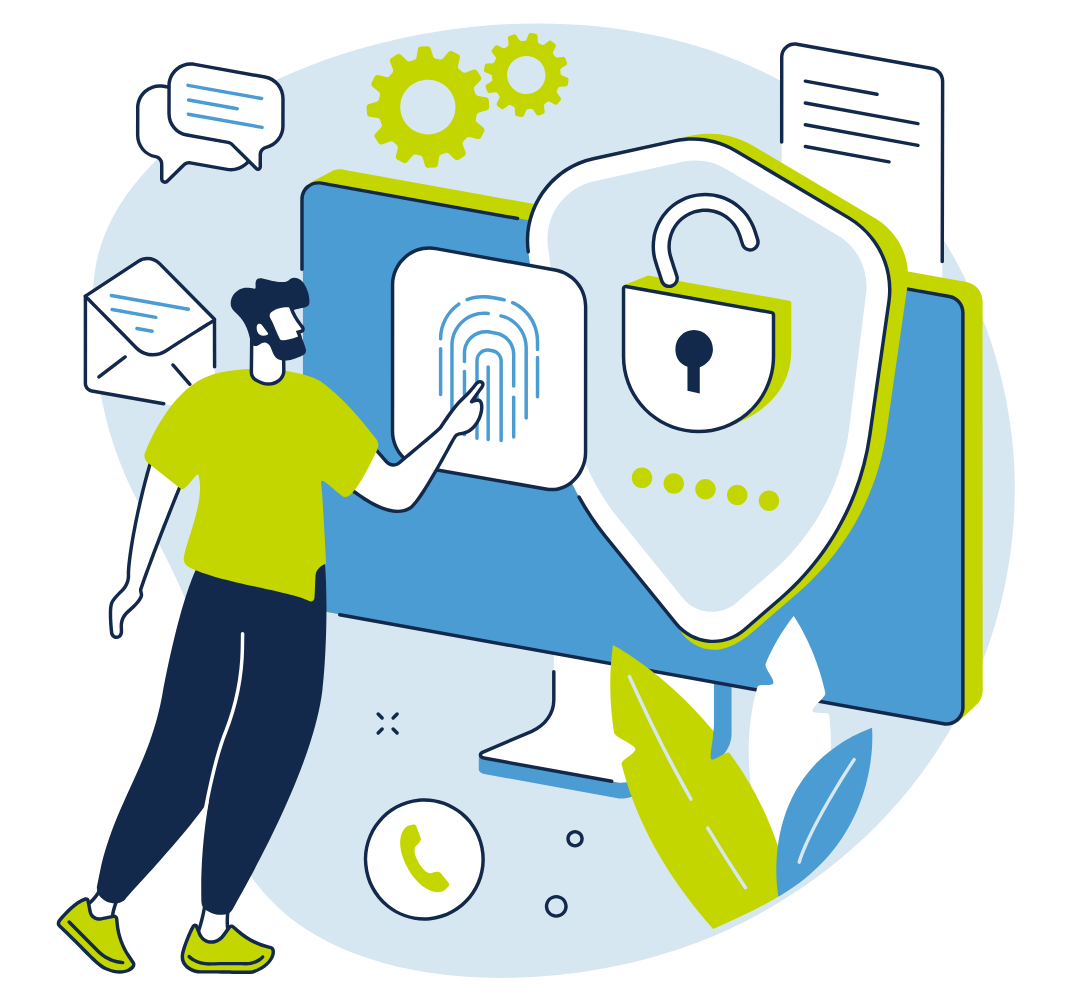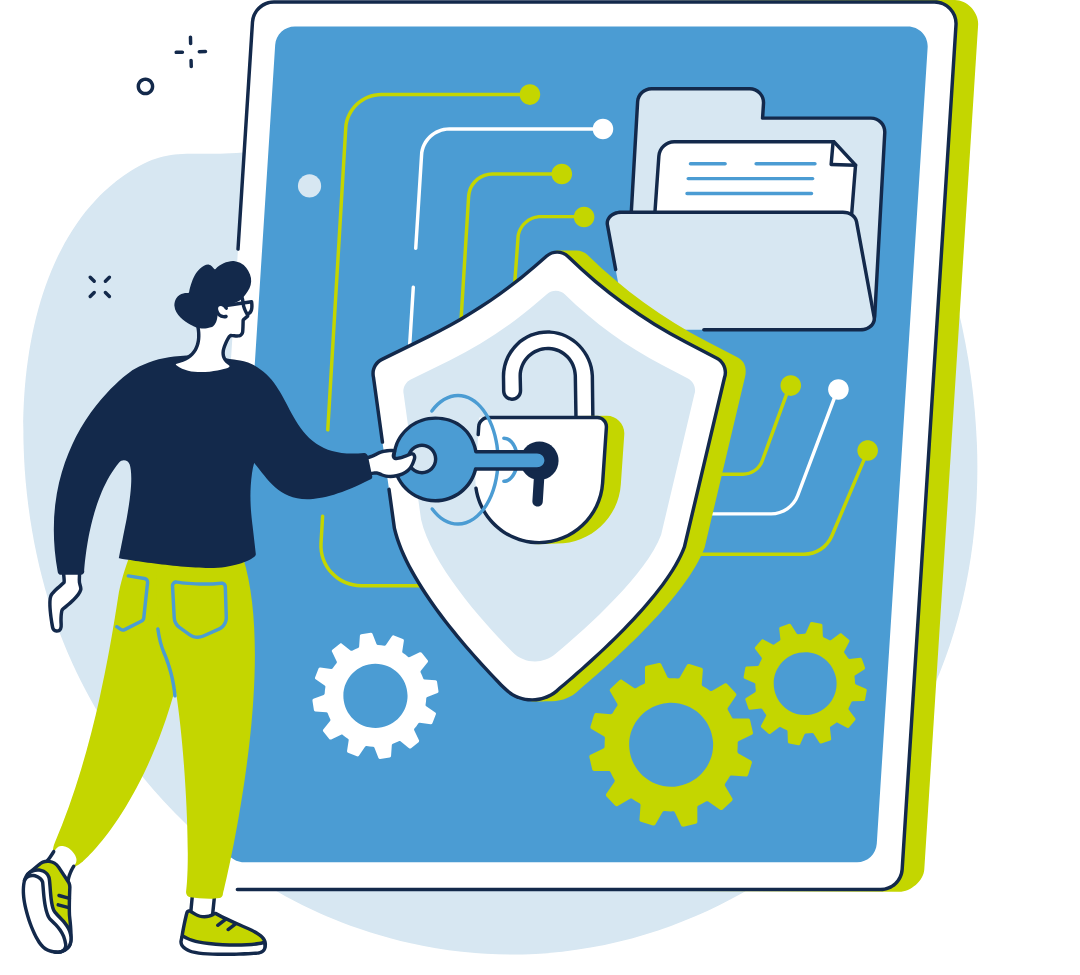ITS is celebrating Data Privacy Week January 21 – 27! Organized by the National Cybersecurity Alliance, Data Privacy Week is designed to help you take charge of your data. This article, adapted from resources produced by the Alliance, sheds light on what you can — and can’t — control about your data.
Data privacy might seem abstract, but it couldn’t be more personal. You generate lots of data. Online, that data includes your browsing history, ads you see and interact with, how long you spend using apps and media you consume. And offline, your home address, health and voting records and even your Social Security number are all pieces of data. While you can’t control the fact that your data is collected, in many cases you can still take charge of your data, especially how and whom your data is shared.
Your data has value — and it’s for sale. Who’s buying? Advertisers, mostly, but also others like software developers who want to maximize the time (and money) you’ll spend on their apps. Your data is also included in data sets that are a huge part of the AI boom. Turns out that you and your data make up a slice of a multibillion industry.

And even though our data is worth a lot of money to others, we often don’t put much value on our own data story. But it appears consumer awareness of and concern about data privacy is growing. A 2020 McKinsey survey found that 71% of consumers said they would stop doing business with a company if it gave away sensitive data without permission. If that sounds like you, here are some tips for taking charge of your data privacy in 2024.
1. Know what you can’t control
Unfortunately, you can’t control who has access to every scrap and byte of your data. The IRS, for example, will know how much money you make. Your streaming app will know which shows you watch. And many online services require some of your data to function. A maps app can’t suggest directions if it doesn’t know your location. An image-sharing site needs access to your photos.
That means there is a tradeoff between convenience and privacy. To use all the features of your devices, apps and software, you may need to share more data. When you understand that there’s a balance, you can make better informed data decisions by deciding when to share your data.
2. Cultivate an online privacy habit

Apps, websites, devices and software will often seek out more data than you would think is necessary. Why does a Solitaire app ask for your location? Why does a social media app need to know the phone numbers of everyone you know? Here is where you can really take charge of your data.
Fortunately, many web browsers, computers and devices will ask you if you want to share certain types of data with a new app or website. Strike up a habit of paying attention to these requests and taking a moment to reflect before tapping “allow.”
Here are common types of data you might be asked for:
- Your location
- Your contacts
- Your photos and camera
- Data about your behavior and use of a service
When you see these requests, think about what you want to share. On mobile devices, you can often decide if you want an app to only have access to data while using it. If an app or software program refuses to function unless you share certain data that you don’t think it needs (like the Solitaire app demanding your location), find another app. Generally, you might feel more secure limiting how much data you share.
3. Check your settings
Even if an app or software program never asks you for data, you should assume it is still collecting it. Make it a routine to check your privacy settings and ensure everything fits within your comfort level.
You can access app and software permissions through your device’s general settings.
Remember, apps will often ask for you to give them access permissions at all times, but you usually only need to give them permissions for while you are using the app.
Here are some default settings you should usually turn off, unless you need it for the app to function and you trust the app:
- Camera — off
- Microphone — off
- Location — off
- Sync contacts — off

4. Delete apps you don’t use
Every three months or so, do an app audit. Go through your devices and think about each app you’ve installed. This isn’t about decluttering — although that’s a worthy goal too.
Many apps will collect and share your device-use data even when you don’t use them. That means you’re basically giving away your data, and you don’t even use the app! Why should that food delivery app you used once a year ago get access to all your precious data?
If you haven’t used the app in months, delete it from your device. Don’t be afraid to be ruthless, you can always download the app again.
For more tips about protecting your data, visit Safe Computing at UNC or the National Cybersecurity Alliance.
